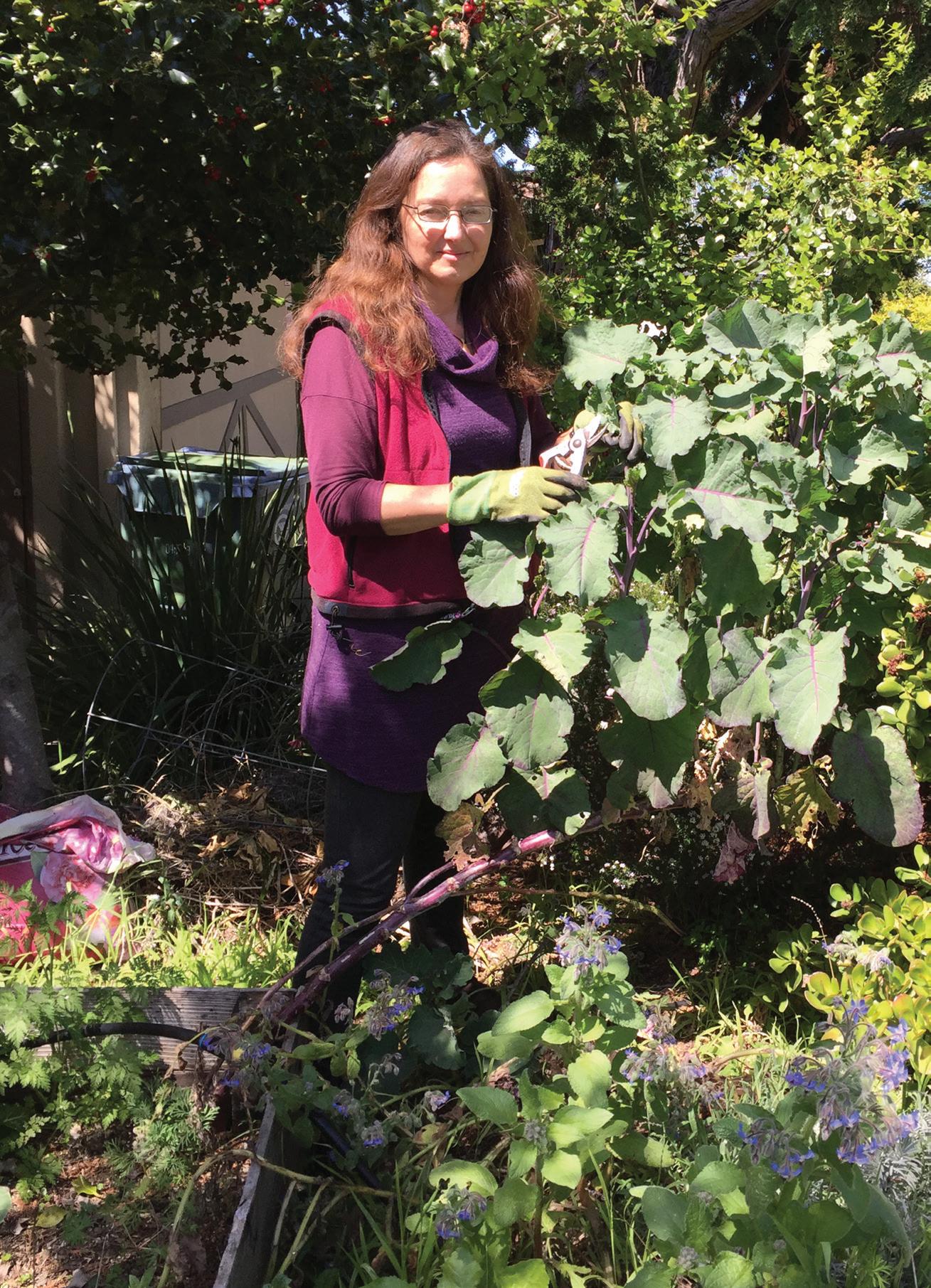
3 minute read
Growing more than just green

Growing more than just green
Program aims to improve SQ and develop skills for future jobs
By Emile DeWeaver
As rainfall pelted the dusty grounds of San Quentin last fall, several dozen incarcerated and free people gathered in the prison’s Protestant Chapel. They were not seeking a heavenly salvation. They wanted to preserve mankind’s future on this rapidly heating planet.
To them, it began with connection.
“If you think solar and wind power are the answers to our problems, you’re wrong,” said the incarcerated Sam Hearnes, a co-founder of The Green Life, an environmental program at the prison. “The greatest form of renewable energy is our relationships with each other,” he said to the program’s second graduating class.
The Green Life was born after CNN commentator Van Jones visited San Quentin in 2009. Jones, who was then an advisor to President Obama on environmental jobs, held forth in the chapel on ideas that he had championed in his book, Green Collar Economy, about how to create jobs in areas such as recycling and energy.
Jones had argued that those sorts of jobs would be perfect for former convicts, and wondered aloud why people weren’t given the same opportunities to recycle themselves as garbage.
“If a soda can can have a second chance, can a human being?” Jones had asked. A green life, he said, was “a return to wisdom,” a homage to ancestors who understood how to live harmoniously in their environment.
Incarcerated people are in a unique position to help when they recover from the crises that led them to prison, he argued. Knowledge from their personal recoveries could be used to help overcome the bigger crises outside.
“Some of the wisdom and genius we need is not going to be found on Wall Street,” said Jones. “It’s going to be found in this room.”
The program that evolved from that day consists of two dozen men meeting on Saturday nights in an interfaith chapel at the prison. All of the course participants choose a project to work on, such as a worm bin and composting project, aquaculture and water catchment system, solar projects and how to live a more conscious green life.
The men learn how to relate environmental issues into their incarceration, rehabilitation and return to their families. The lessons examine community building, environmental justice,
sustainable living, zero waste and other ecological topics.
Six years after the first graduation and about 75 graduates later, program director Angela Sevin spoke of the results.
“I consider people who are in prison part of my community,” Sevin said. “If we are gonna survive on this planet with temperatures rising, with carbon parts per million over 350 — which is considered a trend toward an unlivable planet — we’re going to need all of our resources. And that means human resources to build resilience and come up with solutions.”
In Green Life, students deeply and profoundly embrace their interconnectedness with all living things. In turn, they are able to heal and transform the way they treat each other and the Earth by overcoming patterns of neglect and abuse.
“I go back into my world on the streets and have a better feeling about a stranger I might encounter on a day to day basis, whether they are Black or Brown or White,” Sevin said.
Green Life continues to work with participants after they’re released from prison into the Bay Area. It’s committed to providing resources, connections and additional training for workforce development (such as public speaking workshops and business trainings) and via its own partners, including Impact HUB Oakland, Uptima Business Bootcamp.






